The Intel Core i9-7980XE and Core i9-7960X CPU Review Part 1: Workstation
by Ian Cutress on September 25, 2017 3:01 AM ESTBenchmarking Performance: CPU Rendering Tests
Rendering tests are a long-time favorite of reviewers and benchmarkers, as the code used by rendering packages is usually highly optimized to squeeze every little bit of performance out. Sometimes rendering programs end up being heavily memory dependent as well - when you have that many threads flying about with a ton of data, having low latency memory can be key to everything. Here we take a few of the usual rendering packages under Windows 10, as well as a few new interesting benchmarks.
All of our benchmark results can also be found in our benchmark engine, Bench.
Corona 1.3: link
Corona is a standalone package designed to assist software like 3ds Max and Maya with photorealism via ray tracing. It's simple - shoot rays, get pixels. OK, it's more complicated than that, but the benchmark renders a fixed scene six times and offers results in terms of time and rays per second. The official benchmark tables list user submitted results in terms of time, however I feel rays per second is a better metric (in general, scores where higher is better seem to be easier to explain anyway). Corona likes to pile on the threads, so the results end up being very staggered based on thread count.
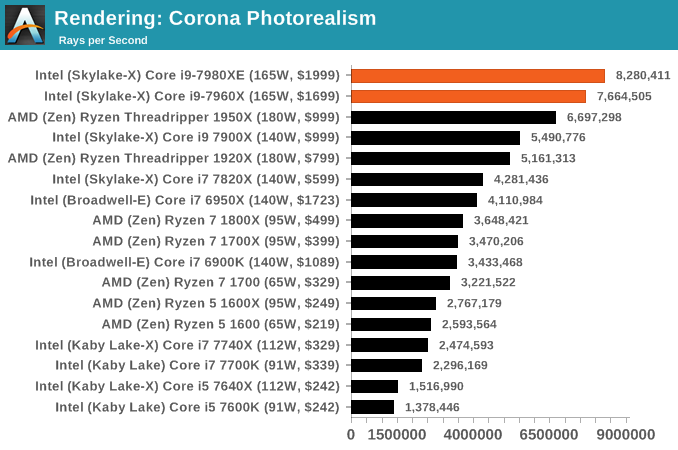
Blender 2.78: link
For a render that has been around for what seems like ages, Blender is still a highly popular tool. We managed to wrap up a standard workload into the February 5 nightly build of Blender and measure the time it takes to render the first frame of the scene. Being one of the bigger open source tools out there, it means both AMD and Intel work actively to help improve the codebase, for better or for worse on their own/each other's microarchitecture.

LuxMark v3.1: Link
As a synthetic, LuxMark might come across as somewhat arbitrary as a renderer, given that it's mainly used to test GPUs, but it does offer both an OpenCL and a standard C++ mode. In this instance, aside from seeing the comparison in each coding mode for cores and IPC, we also get to see the difference in performance moving from a C++ based code-stack to an OpenCL one with a CPU as the main host.
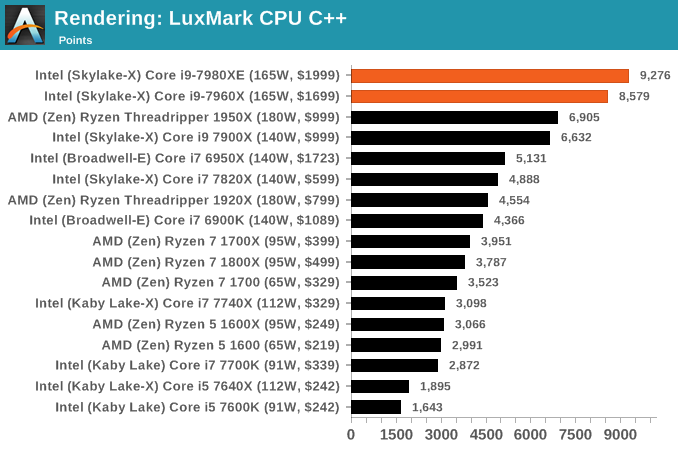
POV-Ray 3.7.1b4: link
Another regular benchmark in most suites, POV-Ray is another ray-tracer but has been around for many years. It just so happens that during the run up to AMD's Ryzen launch, the code base started to get active again with developers making changes to the code and pushing out updates. Our version and benchmarking started just before that was happening, but given time we will see where the POV-Ray code ends up and adjust in due course.
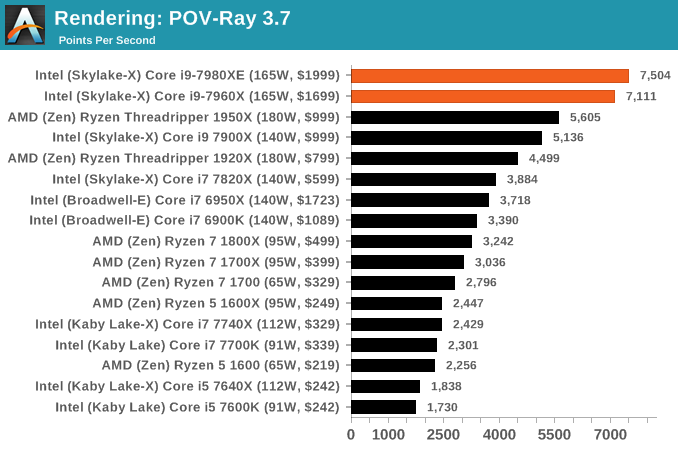
Cinebench R15: link
The latest version of CineBench has also become one of those 'used everywhere' benchmarks, particularly as an indicator of single thread performance. High IPC and high frequency gives performance in ST, whereas having good scaling and many cores is where the MT test wins out.
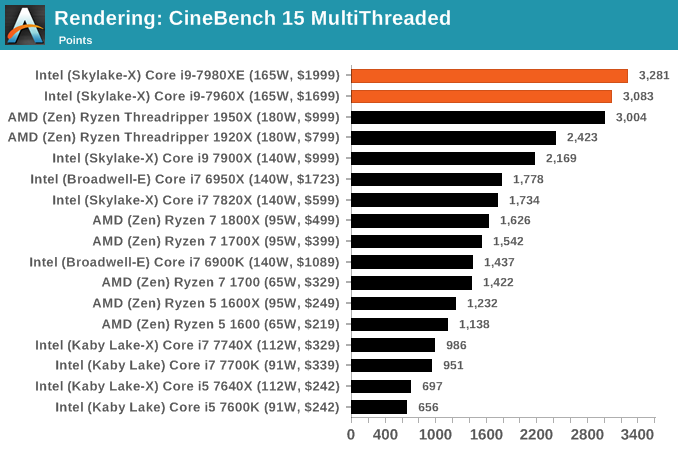
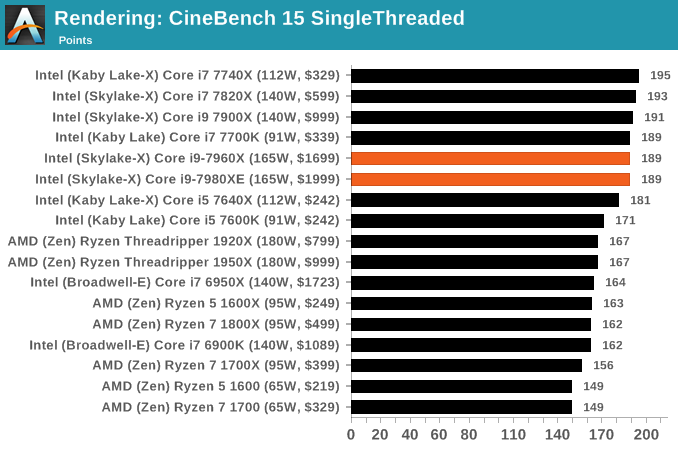










152 Comments
View All Comments
Notmyusualid - Tuesday, September 26, 2017 - link
@ vladxTry telling that to the fanbios here...
For some of us, price is not the main consideration.
HStewart - Monday, September 25, 2017 - link
I have a big issue with latest performance results - especially dealing with multi-core performance. What is most important is single core performance - this primary because real applications and not benchmark application use the primary thread more that secondary threads. Yes the secondary threads do help in calculations and such - but most important especially in graphical application is using the primary thread. Plus quality is important - I not sure AMD is going to last in this world - because they seem to have a very limited focus.HStewart - Monday, September 25, 2017 - link
Especially GeekBench - I don't trust it all - realistically can an ARM processor beat huge Xeon processor. Give me break - lets be realistic.Krysto - Monday, September 25, 2017 - link
Intel is failing hard at competing, if it can only release chips that cost twice as much as AMD's for only a slight improvement in performance.vladx - Tuesday, September 26, 2017 - link
On the contrary, these chips will sell very well since they aren't geared towards "prosumers" but big businesses where every minute wasted could mean thousands $$ lost.willis936 - Monday, September 25, 2017 - link
That performance ler dollar page is amazing. I could look at graphs like that comparing all types of compinents and configurations against different workloads all day.Judas_g0at - Monday, September 25, 2017 - link
I didn't see anything about temp and thermals. For 2k, does Intel give you crappy thermal compound, or solder?Spunjji - Monday, September 25, 2017 - link
Spoiler alert: I hope you like cleaning toothpaste off your $1999 CPU.shabby - Monday, September 25, 2017 - link
Lol platform pcie lanes, good one intel, how many does threadripper have in this case?DanNeely - Monday, September 25, 2017 - link
TR has 60 platform PCIe3 lanes, 68 total if you count the 8 half speed PCIe2 lanes on the x399 chipset.